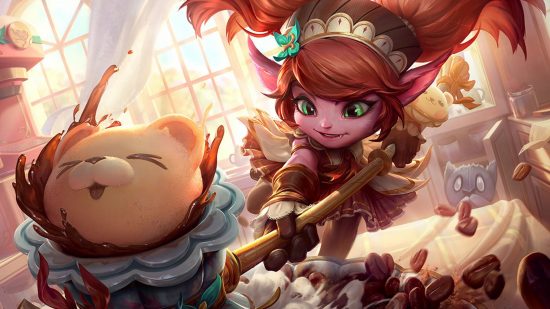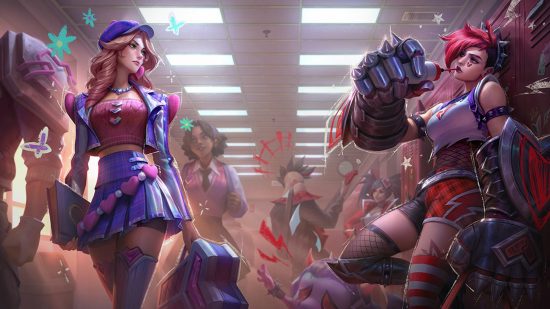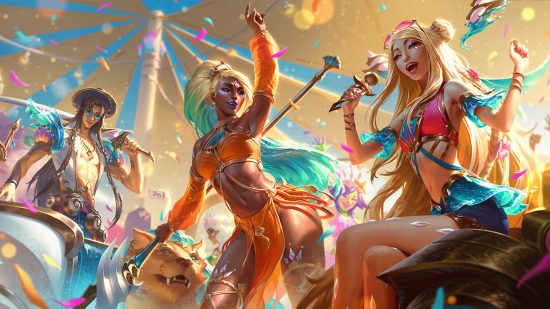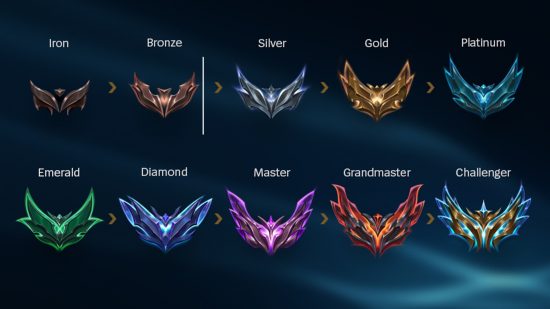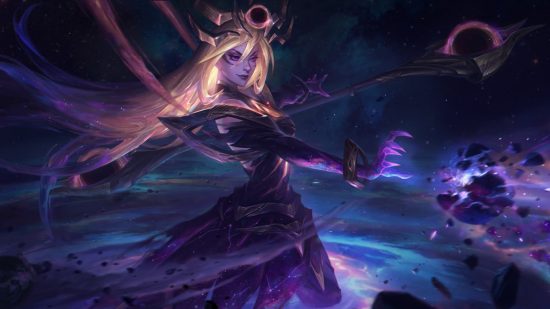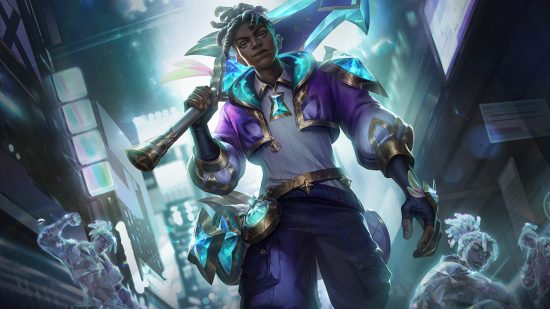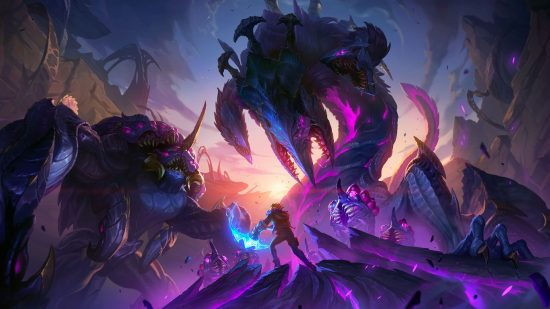What are LoL ranks? While you can play normals, or even ARAMs in League of Legends, there is only one real way to challenge yourself and realize your true potential: ranked play. Ranked matches pit you against plays of a similar skill level, with each match being a true test of your prowess. Every player is assigned a specific League of Legends rank, with wins seeing you gain LP and rise the ranks, and losses doing the opposite.
LoL ranks are essentially how the game grades its players. Anyone you see playing on the League of Legends pro scene will regularly reach the peak, earning themselves the Challenger rank, while we mere mortals may sit towards the bottom of the pile, in Bronze, or even Iron. Utilizing the best LoL champions will increase your chances of climbing the ranks, but depending on which rank you find yourself in, just playing what you’re comfortable with is usually the best way to go.
LoL ranks explained
League of Legends ranks are a way for LoL to categorize its player base into appropriate skill levels, so the ranked matches they play will be evenly matched. There are ten different ranks, ranging from Iron to Challenger.
Each rank from Iron to Diamond is split into four divisions, so if you want to climb from Platinum to Emerald, for example, you would have to progress through Platinum I-IV before reaching the new overall Emerald rank. Master, Grandmaster, and Challenger are the only ranks without divisions.
How to gain LoL rank
Each time you win a ranked match in League of Legends, you’re awarded League Points (LP). If you reach 100 LP in your current division, you’ll move up a rank. For example: if you are on 90 LP in the Silver I division, and win your next game, you’ll be awarded enough points to move up to Gold rank.
Be warned though; this works both ways. If you lose a ranked game, you’ll lose LP, and if you fall below the 0 LP threshold, you’ll be demoted from whichever division you were in before.
Every LoL rank
Here is every League of Legends rank:
- Iron
- Bronze
- Silver
- Gold
- Platinum
- Emerald
- Diamond
- Master
- Grandmaster
- Challenger
Current LoL rank distribution
The entire League of Legends ranked player base sits in this system, and traditionally, it has been quite bottom-heavy, but with the introduction of the Emerald rank, the majority of the players now sit in the middle of the pack. Here is the current LoL rank distribution, according to Esports Tales:
| Rank | Player Percentage |
| Iron | 8.1% |
| Bronze | 18% |
| Silver | 17% |
| Gold | 19% |
| Platinum | 18% |
| Emerald | 13% |
| Diamond | 4% |
| Master | 0.64% |
| Grandmaster | 0.051% |
| Challenger | 0.021% |
How to unlock LoL ranked matches
The initial criteria for playing ranked games in League of Legends is to have a player level of 30 or above, and own at least 20 different champions. This will ensure that new players have enough time to get to grips with the game before jumping into a slightly more pressurized environment.
Once you enter ranked for the first time, you won’t have a rank, obviously, so the game will test you by making you play five ranked placement games. You don’t have to play these consecutively and can take your time with them. With each win or loss, it will adjust your starting rank. Once you have completed your placement matches, you will be told your starting rank and can start gaining (and losing) LP like everybody else.
Riot has been known to be quite conservative with these initial ranked placements, so don’t be too down on yourself if you get landed in a low division. Take your time, hone your craft, and rise like an absolute champion.
What is LoL MMR?
MMR is a tricky, nebulous thing by design. It stands for Matchmaking Ranking and is how Riot determines your actual skill level in the game, regardless of your rank. Your MMR determines how much LP you win and lose from a ranked game, with higher LP gains being an indication that LoL rates you higher than your current rank, as it’s trying to get you to the rank it thinks you should be at.
There is no way of telling your MMR, and Riot has not explained how it determines this, but if you’re gaining a lot of LP from a win, and losing little from a loss, you’re likely below where you should be. In theory, anyway.
What is LoL rank decay?
This may only be pertinent to those at the top of the pile, but since we’re all going to get there someday (right?) then it’s worth noting. Once you reach the Apex Tiers (Diamond and up) there is a chance that your account will begin to decay – lose LP – if you’re inactive for too long.
If you are inactive for a certain amount of time, you’ll begin to lose a total of 50 LP per day, until you log in and play another game. Players can ‘bank’ these active days by playing multiple games. The decay rates for each rank are thus:
| Rank | Banked days per match | Max. banked days | Initial days before decay | LP lost on decay |
| Diamond | 7 | 28 | 28 | 50 |
| Master | 1 | 14 | 14 | 75 |
| Grandmaster | 1 | 14 | 14 | 75 |
| Challenger | 1 | 14 | 14 | 75 |
Now that you know the ins and outs of LoL ranks, nothing is stopping you from locking in your favorite champ and climbing that ladder. If you need more League of League of Legends help, then check our LOL tier list for Top Lane, Jungle, Mid Lane, ADC, and Support, all updated for the latest patch.
If you want to look fancy while you’re winning, we have everything that’s on sale in the League of Legends skin store, and even the League of Legends Mythic shop, if you’ve got some essence lying about.
